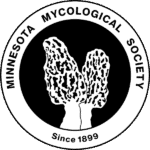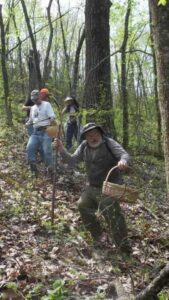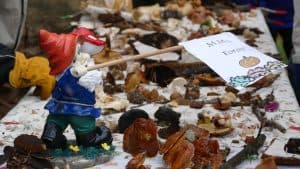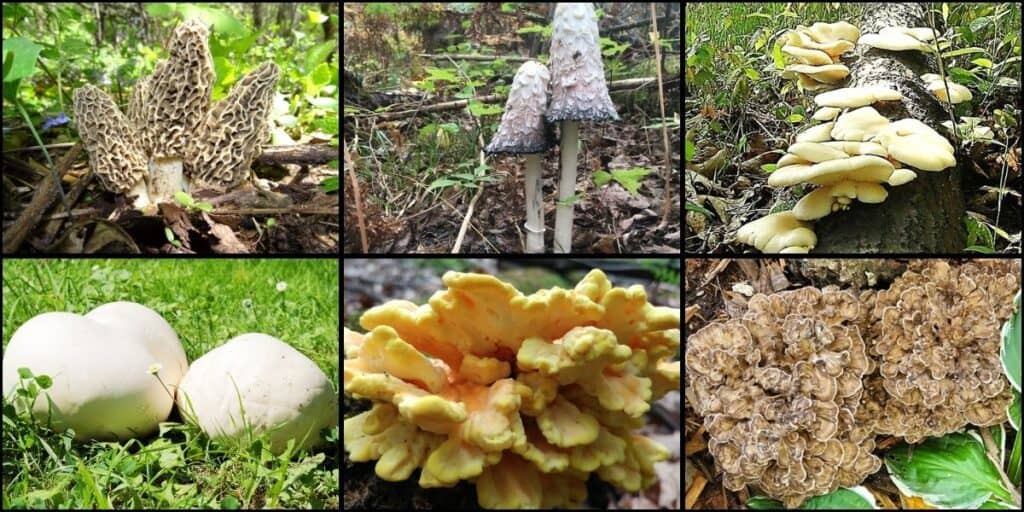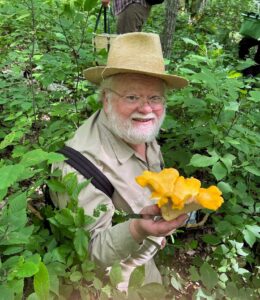MMS forays are guided events for the benefit of our members. Forays are held from May to October. Members receive foray details through MMS emails.
The following pointers will help you, and others, have a more pleasant foray experience.
What should I wear?
- Clothes that are comfortable to move in and will be cool for hiking (so preferably not jeans), and that can get dirty. Avoid loose clothes that can get caught on branches and inhibit your movement.
- Clothes that are pre-treated with Permethrin-based repellents provide superior protection against tick bites. You can treat your clothes yourself or purchase clothing that has been pre-treated with Permethrin, like ExOfficio BugsAway or Insect Shield brand clothing. The most effective topical bug repellents are Picaridin and DEET.
- Long pants to protect from getting scratched by thorny bushes, poked by branches or bitten by bugs.
- Long-sleeved shirt for same reasons as above and for sun protection.
- Shoes that completely cover your feet to keep your feet dry in wet conditions and protect against sharp objects like sticks and rocks. Choose footwear that provides good traction on wet, slippery ground.
- Hat with a visor or brim is preferable as this keeps off the sun, bugs, and sneaky tree branches from your face and hair.
- Additional gear that may be recommended depending on weather and conditions in the foray area:
- Water-resistant or waterproof jacket and footwear if it has been rainy recently or rain is predicted. Rain pants or gaiters may also be indicated for very rainy days or wet woods.
- A warm hat for early season forays, or cool mornings in the woods.
- Layers, such as a sweatshirt over a t-shirt, to change with fluctuating temperatures
What should I bring?
- Water bottle and possibly trail snacks
- Whistle to call for help in an emergency. Whistles work best in flat terrains without natural obstructions to sound. One whistle blast means ‘Where are you?’, two blasts means ‘Come here’, and three blasts or any continuing frantic whistle-blowing means ‘Help me!’.
- Cell phone to call 911 in an emergency. Even if your phone shows ‘no service’, 9-1-1 may get through.
- Navigation aids including a park/area map, compass, GPS tracker, and cell phone. Some cell phone apps work even without a cell signal like the phone’s compass or GPS apps for tracking. Before leaving home, save offline maps of poor cell service areas in Google or Apple Maps apps.
- Hiking stick to help you keep your balance on uneven terrain and use to push away leaves and plants that may be hiding mushrooms underneath.
- Camera to document your mushroom finds so you can share them with others and upload to iNaturalist.
- Basket or cloth/paper bag to put the mushrooms you find in. Additionally, wax bags, small paper bags, or containers made from any breathable material (not plastic bags) are helpful for keeping multiple specimens separate and clean.
- Mushroom/pocket knife and a small brush for gently removing dirt and debris from collected mushrooms.
- Use data collection aids to record information to help identify the mushroom later, like a pencil and observation slips or small notepad, or use a cell phone app.
- Field identification guides/books
Ok, I’m here. What now?
- Arrive promptly at the meeting location 10-20 minutes ahead of the scheduled start time.
- Check in with the foray leader or assistant.
- Listen to the foray leader’s instructions about where the group will be going, and when and where to reconvene. The group will often return after 1 or 2 hours to the original meeting spot, or a nearby location. This is where specimens collected by the group are shared on a table for identification by the foray educator.
- Embark on the foray in small groups as instructed. Look and observe fungi only collecting where it makes sense to bring a specimen back to the identification table.
- Meet back at the appointed time and place no later than the indicated time.
- Take time to talk and learn with other members about what you saw and observed. Depending on their experience, foray team staff or other members may be able to help with identification and answer questions. The foray educator is the primary identification expert on the foray team.
- Be a good steward of the land and leave the site clean, or cleaner, than you found it.
- Do not take home any mushrooms for consumption that have not been positively identified as a safe edible. If you have never eaten a particular edible mushroom, try only a small amount first and then wait a few hours to see how your system responses to it. Not everyone tolerates different species of edible mushrooms the same. Always throughly cook your mushrooms before consuming!
MMS is dedicated to ensuring everyone has a safe and enjoyable outing. Please do your part by:
- Following all rules, local regulations, and laws at every foray location
- Show up early/on-time. We care about our members and a foray team member might stay back for expected, but late, arrivals. Likewise, the foray leader may stay late after a foray if a forager has not made it back yet. We don’t want to leave anyone in the woods, but we also don’t enjoy unnecessarily waiting around for our guests and members.
- Parking space can be tricky at some locations so carpool where you can – another reason to arrive early.
- Use the buddy system in the woods and always have the group in sight. The foray leader will give tips at the beginning of the foray to stay safe and not get lost. However, you are responsible for your own safety.
- Say hello, introduce yourself, and get to know other members in your group and on the foray.
